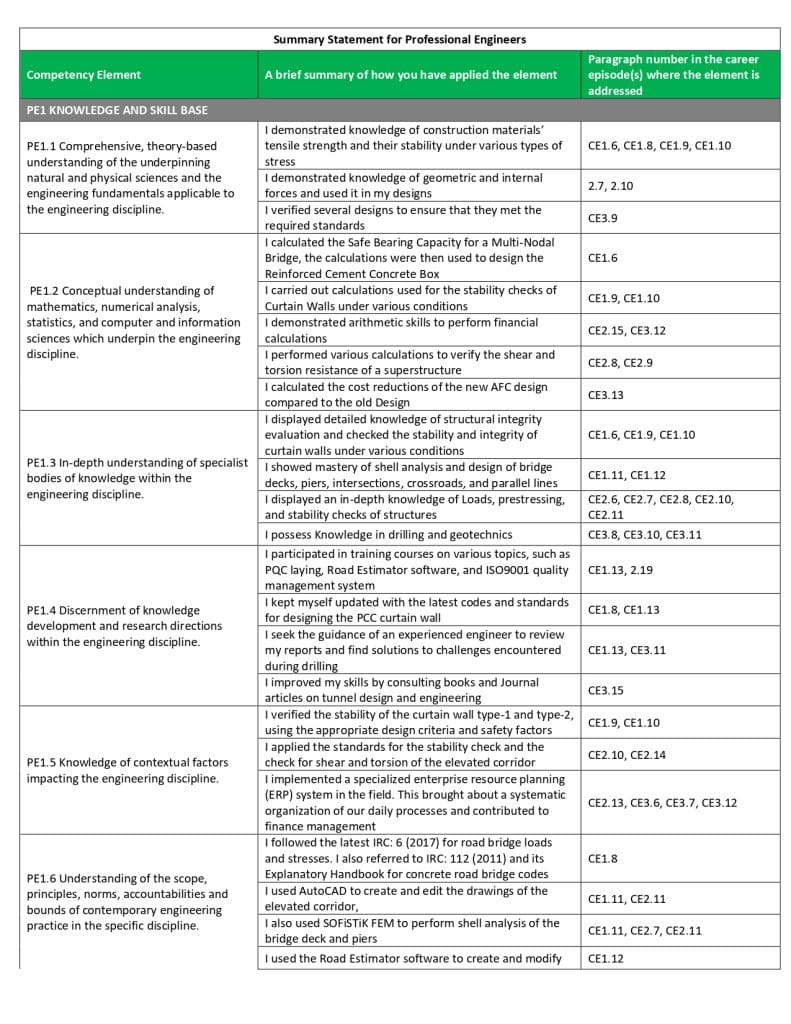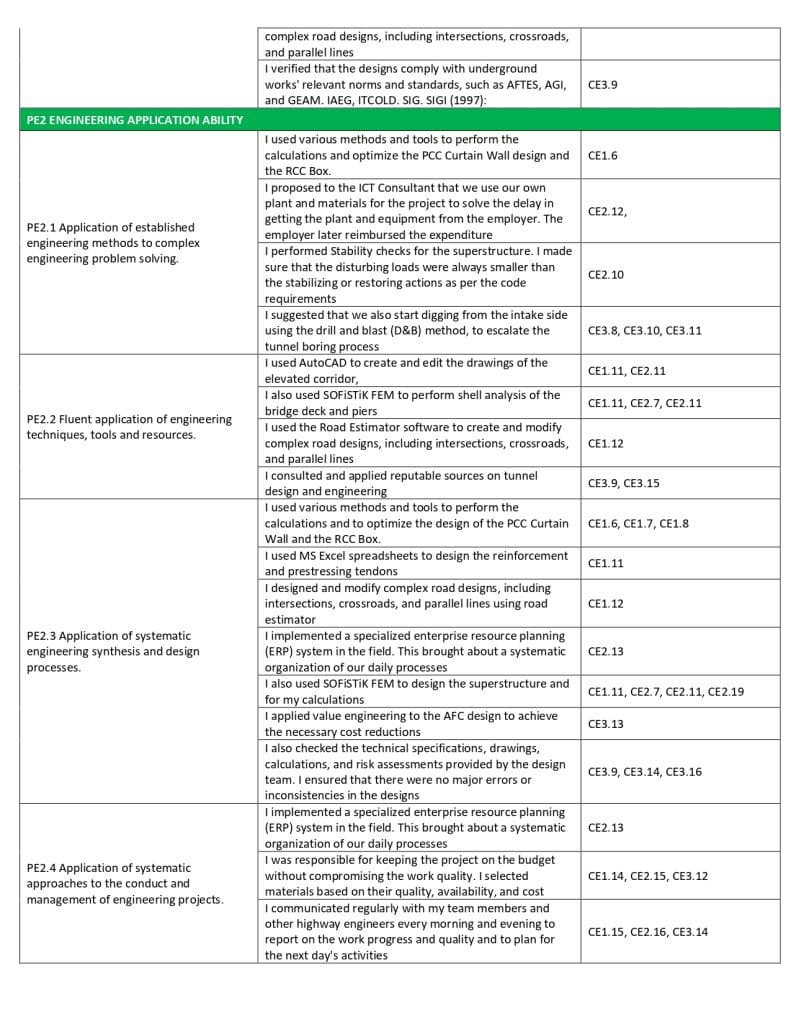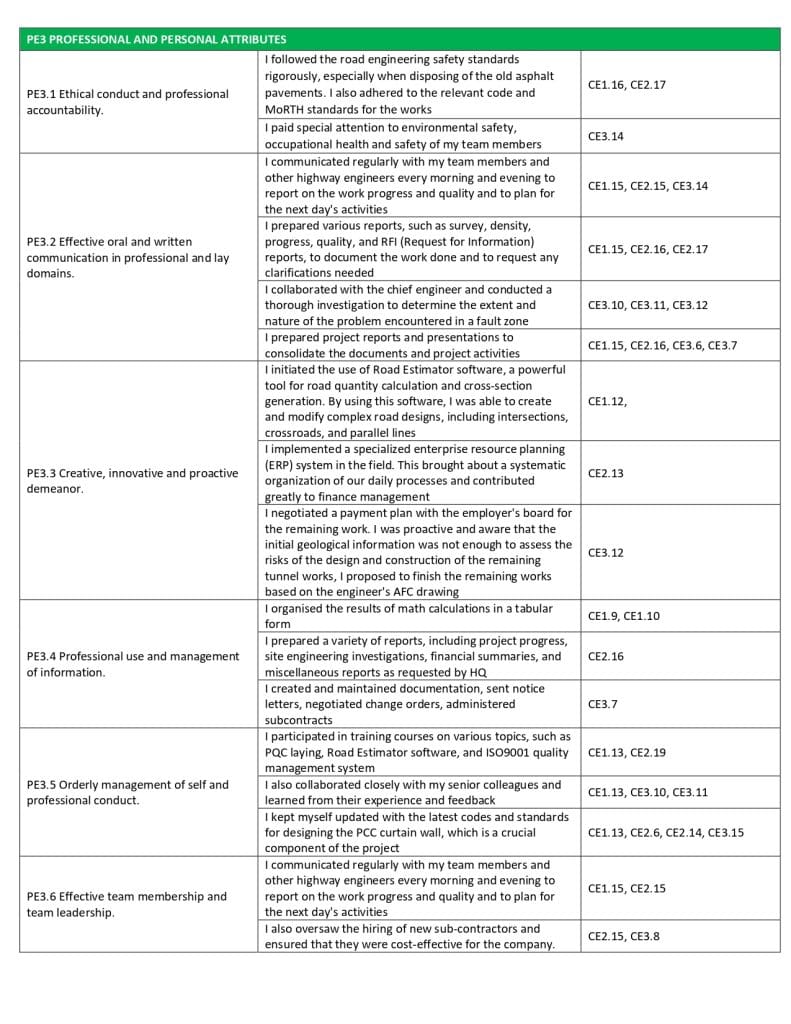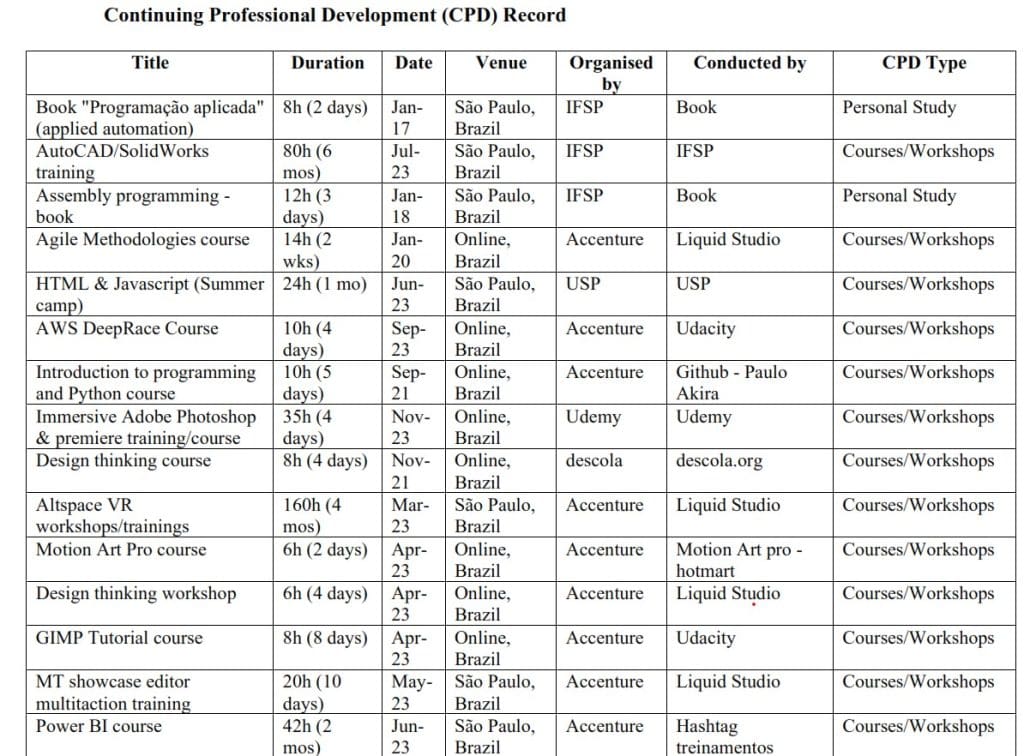What is a Competency Demonstration Report (CDR Report)?
A CDR report, or Competency Demonstration Report, is a technical document. Engineers submit it to show their skills to Engineers Australia. It is required for immigration under skilled migration programs. A CDR includes three career episodes, a summary statement, and a list of CPD activities. It helps Engineers Australia assess an engineer’s skills in:
- Engineering,
- Management,
- Communication, and
- Leadership.
Writing a great Competency Demonstration Report for Engineers Australia Skills Assessment might look hard at first. But if you pay attention to details and take the right steps, you can make a report that really stands out.
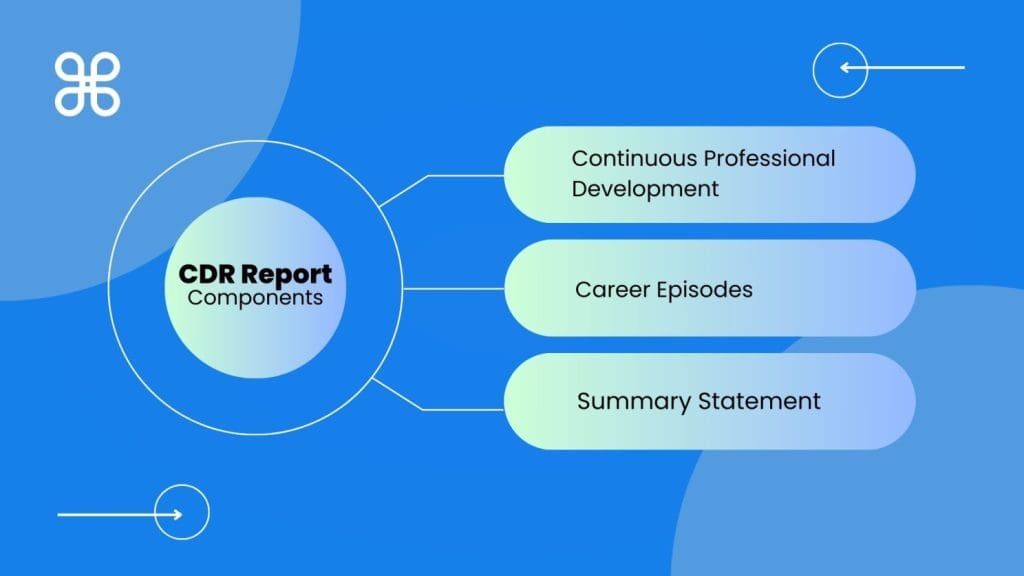
- Continuing Professional Development (CPD): The CPD is a log of training activities you do after finishing college. It can include courses, seminars, workshops, and conferences you’ve attended. It shows you’re keeping up with new changes and trends in engineering.
- Career Episodes: These are the core of your CDR report sample. They include three narratives that highlight your engineering knowledge, skills, and problem-solving abilities. Each Career Episode focuses on a specific event or aspect of your engineering work, demonstrating how you’ve applied your skills in real-life situations.
- CDR Summary Statement: It is a detailed cross-referencing of your Career Episodes. It checks the competencies in them against the elements sought by Engineers Australia. It acts as a summary of your qualifications, following Engineers Australia’s template. Moreover, it showcases your engineering skills and confirms you meet the required competence level.
Understanding and properly crafting each of these components is vital for a successful CDR Report Writing. They tell your engineering story. They show your skills, experiences, and commitment to learning. Together, they prove you are a competent engineer.
Structuring Your Career Episodes
When composing your Career Episodes for the Competency Demonstration Report (CDR) for your Australian Skills Assessment, it is paramount to follow a structured format to convey your engineering experience and competencies. Each Career Episode should be meticulously structured into four distinct segments: Introduction, Background, Personal Engineering Activity, and Summary.
Introduction (approx. 150 words)
This section introduces the reader to the career episode. It must include:
- The dates and duration of the project or task
- The geographical location where the experience was gained
- The name of the organization involved
Background (200-500 words)
The background sets the scene and provides the context in which you have been studying/working. It should include such things as:
- The nature of the engineering project
- The objectives of the project
- The nature of your particular work area
- A chart of the organizational structure highlighting your position, in relation to the career episode
- A statement of your duties (provide an official duty statement where available)
Personal Engineering Activity (600-1500 words)
This is the body of the narrative and the key assessable component. This section should include such things as:
- How you applied your engineering knowledge and skills
- The tasks delegated to you and how you went about accomplishing them
- Any particular technical difficulties/problems you encountered and how you solved them
- Strategies devised by you including any original or creative design work
- How you worked with other team members
In each Career Episode, use active verbs and “I” to highlight your role. Start with “I designed,” “I led,” “I developed,” or “I solved” to show your involvement clearly. For example:
- I designed a new system that improved efficiency by 20%, showcasing my ability to innovate and think critically.
- I led a team of engineers in executing the project, demonstrating my leadership skills and capacity to manage resources effectively.
Summary (50-150 words)
This section sums up your impressions of the engineering activity and your role in it. It covers aspects such as:
- Your view of the overall project
- The extent to which the project objectives were met.
- The contributions you have made towards achieving these objectives.
- Reflections on what you learned from the experience and how it contributed to your growth as an engineer.
CDR Summary Statement
The CDR Summary Statement wraps up your Competency Demonstration Report for Engineers Australia skills assessment. Here, you link the skills shown in your Career Episodes to Engineers Australia’s standards. This section is crucial. It offers a snapshot of your engineering skills, ensuring they meet the required level.
Link each competency to a specific instance in your Career Episodes that shows it. This exercise needs precision. A failure to show this link could harm your application.
The summary statement competency elements include:
To ensure accuracy in mapping competencies, follow these structured steps:
- Review Competency Elements: Understand the competency standards for your job category, as defined by Engineers Australia. Identify the core and specific competencies expected of a candidate.
- Analyze Career Episodes: Revisit your Career Episodes. Find examples where you showed these skills. It’s vital to cover a wide range of skills in your episodes. This will show a complete engineering skill set.
- Reference Directly: In the Summary Statement, directly refer to the paragraph in your Career Episodes that shows each competency. Cite the Career Episode number and the paragraph marker, e.g., “CE1, Paragraph 3.
- Be specific and concise: For each competency, briefly describe how your actions or decisions in the project showed it. Avoid vague statements or generalizations, focusing instead on concrete examples.
- Demonstrate a Range: Ensure that the mapped skills cover technical knowledge, problem-solving, project management, and professional traits. This approach shows both your engineering skills and your ability to work well in a professional setting
The Continuing Professional Development (CPD)
The Continuing Professional Development (CPD) includes various learning activities. Engineers engage in to grow their skills and knowledge. It shows your commitment to growth and learning to meets the changing standards of the engineering sector.
All relevant CPD activities must be included in your CDR application. The CPD must be in a table. It should have the title, date, duration, venue, and organizer. It may include details of:
- Formal post-graduate studies.
- Conferences at which you have delivered papers or attended.
- Short courses, workshops, seminars, discussion groups, and technical inspections that you attended.
- Preparation and presentation of materials for courses, conferences, seminars, and symposia.
- Services to the engineering profession (volunteer work, board or committee volunteering, mentoring, etc.).
- Private study (includes books, journals, manuals, etc.).
Your CPD listing must not be more than one A4 page.
It is not necessary to include certificates from each course.
List of Documents Needed to Support Your CDR Report
Here is a list of the essential documents needed to support the claims in your CDR Report. This is per the latest update from Engineers Australia on July 19, 2024.
Formatting, Authenticating and Organizing Your Documents
You must ensure your documents are authentic and well-organized. This is critical when preparing your Competency Demonstration Report (CDR) for Australian Immigration Skills Assessment. This phase is key. It boosts your application’s credibility and helps the panel evaluate it.
Formatting and Cohesion
Consistent formatting in your Competency Demonstration Report (CDR) is vital. It shows your organizational skills and respect for professional standards. Using a uniform font, style, and layout shows your document’s quality. It reflects the attention to detail of an engineering professional.
Authentication Process:
- Certification of Copies: Certification of Copies: A person or agency, recognized by your country’s law, must certify all copies of the original documents. Certification must attest that the copies are true copies of the originals. Please refer to Engineers Australia’s guidelines for a list of acceptable certifying authorities.
- Translations: For documents not in English, you need to provide a full English translation. Moreover, this translation must be done by an accredited translator, such as those certified by NAATI in Australia. Ensure that both the original document and its certified translation are submitted.
Organizing Your Documents:
- Chronological Order: Arrange your documents in chronological order, beginning with the most recent. This order applies to each section of your document list. It ensures a flow that mirrors your professional and academic progression.
- Clear Labeling: Clearly label each document or group of documents. Indicate the category (e.g., “Academic Credentials”, “Employment Documentation”) to which they belong. This aids in the assessors’ easy navigation through your Engineers Australia CDR Report.
- Checklist Verification: Prior to submission, cross-reference each document against the list provided in the previous section to ensure completeness. Missing or improperly prepared documents can result in processing delays or the rejection of your CDR Report.
- Digital Submission: If you submit your CDR Report electronically, use high-quality, legible scans. They must be in a universal format, preferably PDF. The file name should be simple. It should include your name and the document type for easy identification.
Submitting Your CDR Report Through Engineers Australia (EA) Online Portal
Upon ensuring that your document package meets all the prerequisites of Engineers Australia (EA), you are ready to submit your Competency Demonstration Report (CDR) through the designated EA online portal. It is paramount that this step is approached with diligence and precision, as it represents the culmination of your efforts to showcase your engineering skills and knowledge. Follow these structured steps for a successful submission:

- Portal Registration and Login: Begin by creating an account on the Engineers Australia online portal if you haven’t done so already. For those with existing accounts, simply log in using your credentials. Keep your contact info current. It is EA’s only way to reach you about your CDR Report.
- Submission Form Completion: Go to the submission section. Then, fill out the CDR submission form. This form requires key details about your application. It needs your personal info, engineering discipline, and details of the submitted documents. Ensure all information is thorough and accurate before proceeding.
- Document Upload: After completing the form, you will upload your documents. This includes your Competency Demonstration Report, ID, transcripts, training records, and English test results. Check that each document are correctly labeled, formatted, and in an acceptable file type as per EA guidelines. Check that all files are complete and uncorrupted to avoid errors.
- Submission Review and Confirmation: Before finalizing your submission, review all entered information. This step is critical. It avoids delays or rejection for missing or incorrect info.
- Payment and Submission: Submit the required assessment fee as per the latest EA guidelines. Fees can typically be paid through the portal using various payment methods. Once payment is confirmed, complete your submission. You will receive a receipt confirming your CDR has been submitted.
- Submission Tracking: Use the EA portal to track your application’s progress. EA also provides updates via email. So, keep your email current throughout the assessment.
The assessment takes about four weeks. You’ll be notified via your portal account. If unsuccessful, you can apply for a review within three months or appeal within six months
Engineers Australia July 19th, 2024, update
Preparation for Engineers Australia Interview
Upon successful evaluation of your CDR Report, you may be called for an interview with Engineers Australia. Use these guidelines to confidently express your skills and experiences in the interview.
- Review your CDR report: Before the interview, revisit your submitted CDR thoroughly. Know your narrated projects well. Be ready to discuss any detail. The assessors may question you to confirm your claims.
- Mock Interviews: Practice with a peer or mentor from the engineering industry. This exercise will ease your nerves. It will help you express your thoughts under pressure.
- Technical Refreshment: Update your knowledge of the relevant tech in your field and the projects you’ve showcased. Knowing the subject will show your skills in your field.
- Professional Attire: Dress in accordance with professional standards. Wearing a suit or similar attire will show respect for the occasion. It will project a professional image.
- Communication Skills: Improve your non-verbal communication. This includes eye contact, gestures, and posture. Effective non-verbal communication can significantly augment the impact of your verbal responses.
- Response Preparation: Anticipate questions from your CDR and prepare answers.
What to Do If Your CDR Report Is Assessed as Not Suitable
A poor skills assessment can result from various factors. The common grounds for a negative skills assessment often include:
- Insufficient Evidence of Competency: This is when your CDR lacks proof of your engineering knowledge and skills. It must meet the competencies required by EA. Your career episodes must detail your roles, responsibilities, and the engineering problems you solved.
- Non-Compliance with Australian standards: A CDR that fails to meet Australian engineering standards may cause an unsuitable outcome. Know these standards. Show their use in your engineering work.
- Plagiarism: EA takes plagiarism very seriously. Any indication of non-original content within your Engineers Australia Competency Demonstration Report can lead to an immediate negative assessment. Always submit original work and properly cite any references or sources.
- Inadequate Documentation: Failing to provide all required documents, or submitting documents that do not meet the specified guidelines for format, clarity, and completeness, can lead to rejection. Pay meticulous attention to the details of documentation requirements as outlined by EA.
- Incorrect Document Classification: Mislabeling or mis-ordering your documents can complicate the assessment. This may lead to a negative outcome. Follow EA’s guidelines for document compilation and arrangement diligently.
If a CDR Report is deemed unsuitable, candidates should seek advice or use EA’s resources. This will help them understand the assessment criteria and expectations. Corrective action in response to feedback can boost approval on resubmission.
Steps to Reapply or Appeal EA’s Decision
To successfully reapply or appeal EA’s decision, follow a clear, step-by-step plan. Follow these steps to align your resubmission or appeal with EA’s rules. This will maximize your chances of success.
- Comprehensive Review of Assessment Feedback: First, examine the feedback from EA on your initial submission. Identify specific areas cited for improvement or reasons for the not-suitable assessment. This clarity is vital for targeting your resubmission or appeal.
- Decision on Reapplication or Appeal: For reapplication, prepare a new CDR. It must address all feedback received. If you think there was an error, you may appeal. Refer to EA’s guidelines on the appeal process. They include deadlines and the required form.
- Engage Professional Services (Optional): Consider hiring CDR report and EA assessment experts. Their expertise can offer key insights. They can help fix the weaknesses in your initial submission.
- Prepare Your Documentation: For reapplication, revise your CDR. Follow the guidelines and fix the issues that caused the initial “not suitable” assessment. Ensure that your documentation is comprehensive and clearly demonstrates your competencies.
- Reapplication or Appeal Submission: For reapplication or appeal, submit your revised CDR Report through the EA portal. For reapplications, make sure your submission is complete. All documents must reflect the feedback given. For appeals, explain in detail why the initial assessment should be reconsidered. Provide any new evidence or clarifications as needed.
- Payment of Fees: Both reapplying and appealing require payment of fees. Check the EA website for the current rates. Pay them on time to avoid delays in processing your application.
- Patiently Await the Outcome: EA’s reassessment or appeal review process can take time. Check your email and the EA portal for updates.
- If Unsuccessful, Seek Further Guidance: If the assessment is still unsuitable, seek more feedback. Check if more training or experience is needed before reapplying.
Conclusion
Writing a successful Competency Demonstration Report for Engineers Australia takes great care. It is a detailed process. The heart of your CDR report is in the Career Episodes. They tell your engineering story. Each Episode should be a distinct, first-person account of your experiences. It should highlight your skills and meet the Engineers Australia competency standards.
Your CDR is more than a document. It’s a testament to your skills, knowledge, and experiences as an engineer. It’s a powerful tool that, if crafted carefully, can pave the way for your engineering career in Australia. So take your time, put forth your best effort, and let your CDR reflect the competent engineer you truly are. Good luck on your journey!
Looking to boost your chances of success or save time? Our team of experts is here to help! We offer top-notch CDR Report Writing Services.
Don’t let your CDR hold you back. Trust our experts to provide the quality assistance you need.


